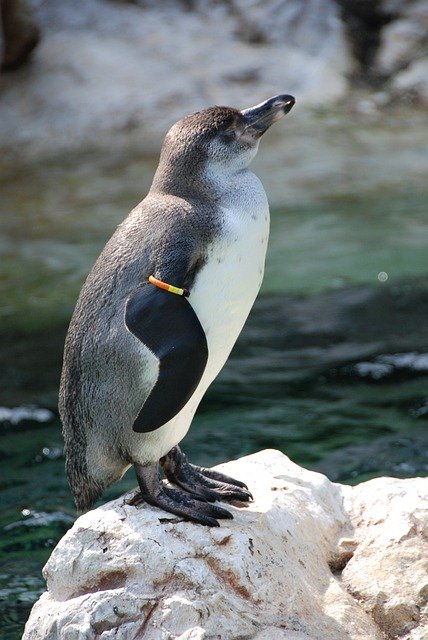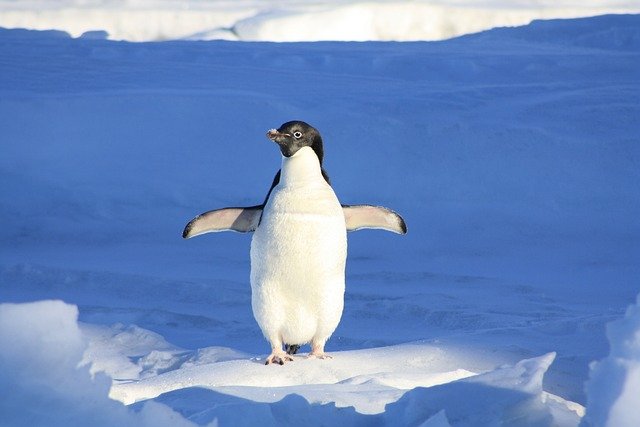**Topic: "The Social Dynamics of Penguin Colonies: How Community Shapes Survival"** In this

The Social Dynamics of Penguin Colonies: How Community Shapes Survival
Penguins, with their charming waddles and striking black-and-white plumage, have long captivated the hearts of people around the world. However, beyond their endearing appearance lies a complex social structure that plays a critical role in their survival. In this post, we will explore the intricate social dynamics of penguin colonies and how these interactions shape their lives and enhance their chances of survival.
The Importance of Community
Penguins are highly social birds that thrive in colonies, often consisting of thousands of individuals. These colonies provide numerous benefits, including:
Protection from Predators: The sheer number of individuals in a colony can deter predators. The collective vigilance of the group helps to identify threats, allowing penguins to react quickly and escape danger.
Shared Resources: Penguins often rely on communal foraging strategies. By hunting in groups, they can increase their chances of finding food, as well as share information about the best feeding grounds. This cooperation is especially vital during breeding seasons when energy demands are high.
Thermal Regulation: In harsh Antarctic climates, huddling together helps penguins conserve body heat. This behavior is particularly evident in species like the Emperor Penguin, where individuals take turns moving to the center of the huddle to stay warm.
Social Structures and Hierarchies
Within penguin colonies, social structures can vary significantly. Some species, like the Adélie Penguin, exhibit a more egalitarian society, while others, like the Emperor Penguin, may have more defined hierarchies. These social structures can influence breeding success and access to resources.
Mating Dynamics: In many species, male penguins engage in elaborate courtship displays to attract females. The success of these displays can be influenced by social status within the colony. Higher-ranking males may have better access to mates, impacting genetic diversity in the population.
Parental Care: In species such as the Gentoo Penguin, both parents share the responsibility of incubating eggs and feeding chicks. This cooperative breeding strategy enhances chick survival rates, as both parents can alternate foraging trips and provide care.
Communication and Social Interactions
Penguins communicate through a variety of vocalizations and body language, which are essential for maintaining social bonds and coordinating group activities. Each species has its unique calls that help individuals recognize their mates and offspring amidst the cacophony of the colony.
Vocalizations: Penguins have a complex system of calls that convey different messages, such as alarm calls, mating calls, and contact calls. These vocalizations play a crucial role in maintaining social cohesion and facilitating cooperation during foraging and breeding.
Physical Interactions: Penguins also engage in physical interactions, such as preening and touching, which strengthen social bonds. These behaviors are vital for maintaining the social fabric of the colony and ensuring that individuals work together effectively.
Challenges to Social Dynamics
While the social structure of penguin colonies offers many advantages, it is not without challenges. Environmental changes, such as climate change and habitat loss, can disrupt these communities, leading to decreased food availability and increased competition.
Impact of Climate Change: As ocean temperatures rise and ice habitats diminish, penguins face challenges in accessing food sources. These changes can lead to increased stress within colonies, affecting social dynamics and breeding success.
Human Interference: Overfishing, pollution, and tourism can further strain penguin populations. Disturbances from human activities can disrupt nesting sites and alter foraging patterns, impacting the social structure of colonies.
Conclusion
The social dynamics of penguin colonies are a testament to the power of community in shaping survival strategies. Through cooperation, communication, and shared resources, penguins have evolved complex social structures that enhance their chances of thriving in some of the harshest environments on Earth. As we continue to study these remarkable birds, it is crucial to recognize the importance of preserving their habitats and understanding the challenges they face in our rapidly changing world.
By appreciating the intricate social lives of penguins, we can better advocate for their conservation and ensure that future generations can enjoy the sight of these fascinating creatures in their natural habitats.
